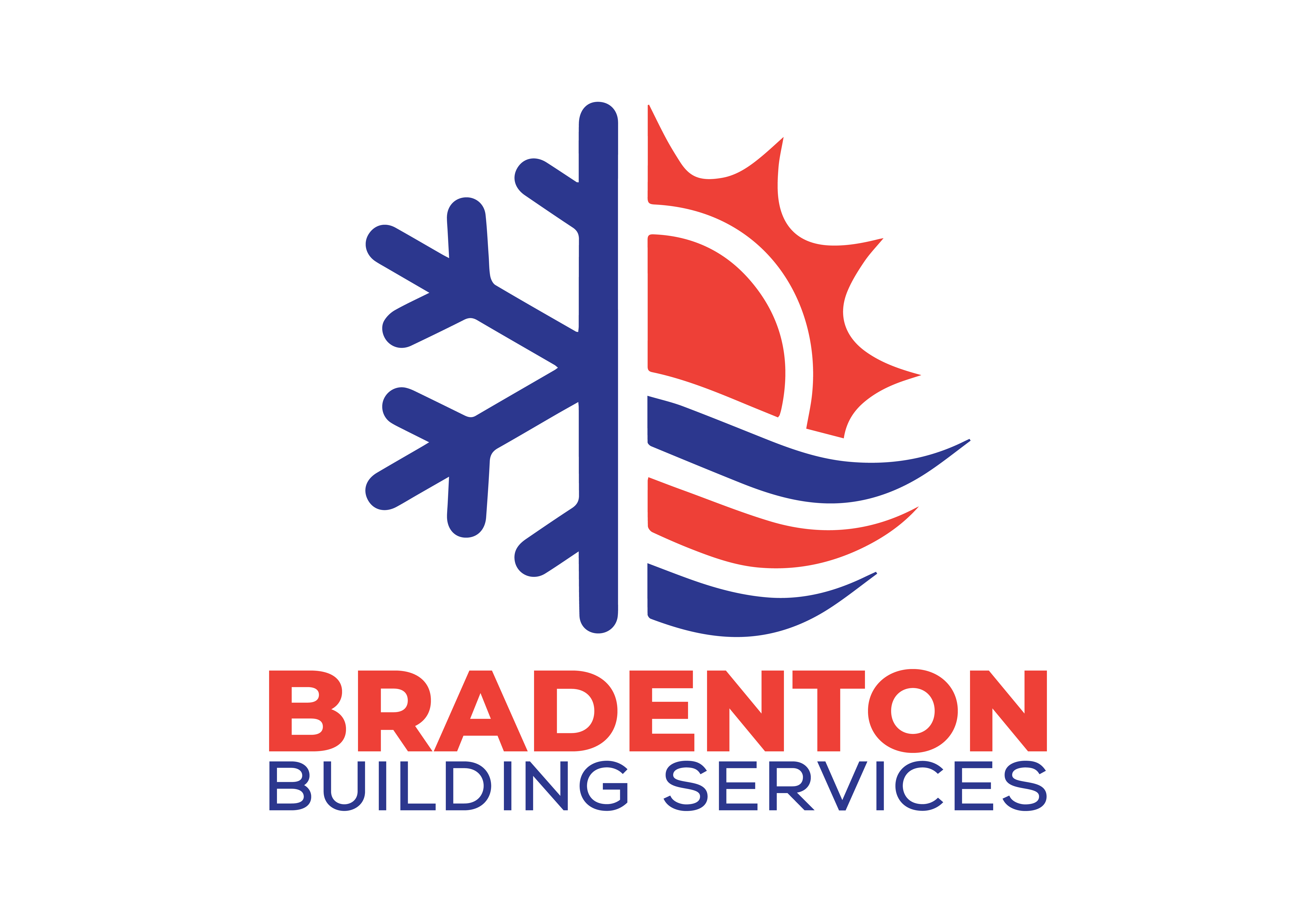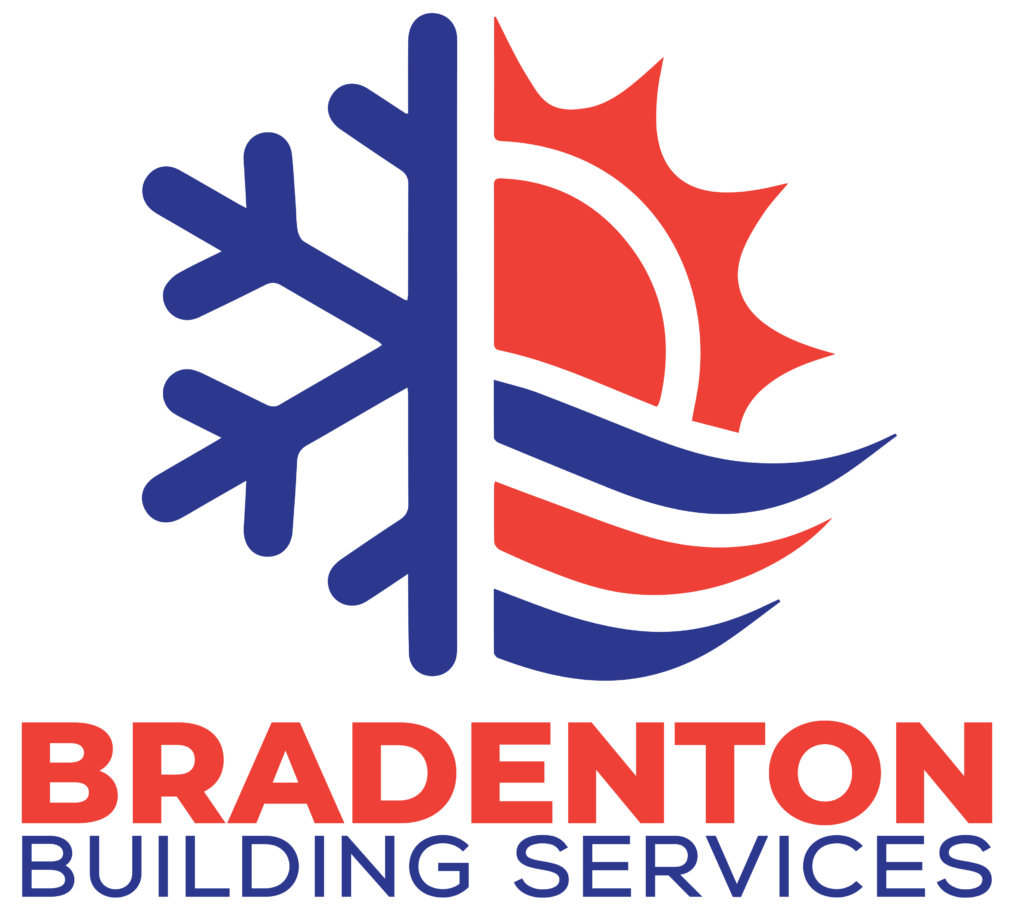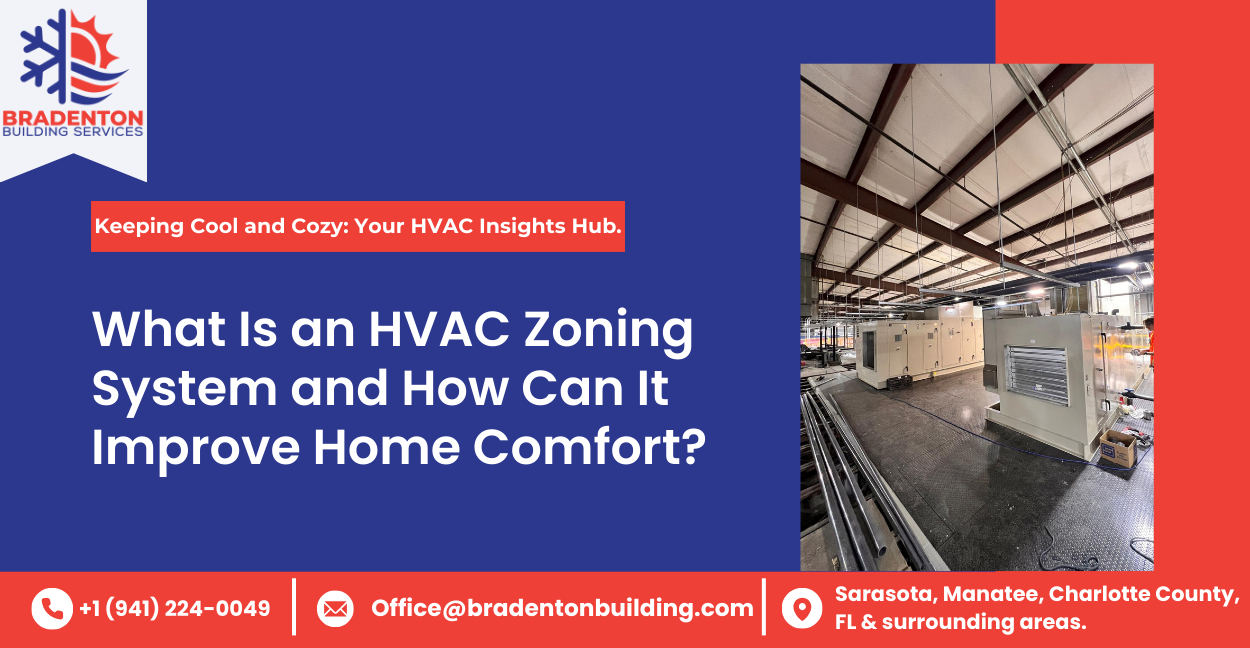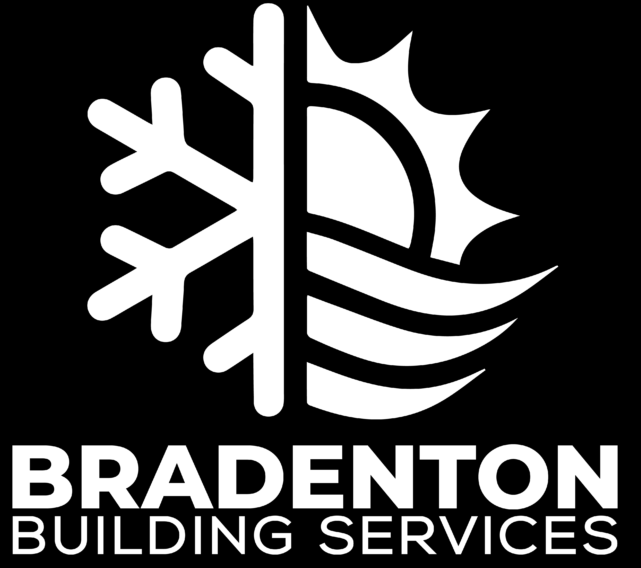An HVAC zoning system is an innovative way to divide your home into different areas, or “zones,” each of which can be controlled independently. This system allows you to manage the temperature in various parts of your home separately, providing more comfort and efficiency. Unlike traditional HVAC systems, which treat your entire house as one zone, zoning systems allow each room or area to maintain its ideal climate, adjusting based on specific needs. In this article, we’ll explore how HVAC Zoning Systems work and how they can enhance home comfort, energy efficiency, and overall savings.
What Is an HVAC Zoning System?
An HVAC zoning system is a smart technology that enables homeowners to control the temperature in different parts of their home independently. By dividing your home into distinct “zones,” this system allows each zone to have its own thermostat, creating customized heating and cooling for each area. This means that areas of your home that are used more often can be kept at your ideal temperature, while other less-used rooms can be maintained at a more economical level.
The system works with dampers, which are installed in the ductwork, to control the airflow to each zone. The zoning system is typically controlled by a central panel that communicates with the thermostats and dampers to adjust the temperature in real-time based on the preferences for each zone. This control offers homeowners enhanced comfort, energy efficiency, and reduced utility costs, as only the areas in use are heated or cooled.
How HVAC Zoning Systems Work
An HVAC zoning system is designed to provide more precise control over the temperature in different areas of your home. By dividing your home into zones, you can adjust the temperature of each area independently based on its specific needs. Let’s dive into the key components that make a zoning system effective:
1.) Thermostats
Each zone in a zoning system has its own thermostat, which allows you to set a temperature that fits the needs of that particular space. For example, the living room thermostat may be set to a cooler temperature during the day, while the bedrooms are kept warmer at night. The thermostat in each zone is responsible for monitoring the temperature in that area and sending signals to the control panel to adjust the system accordingly. This setup ensures that every room or section of the house gets the temperature it needs without affecting other areas.
2.) Dampers
Dampers are mechanical devices installed within the ductwork of your HVAC system. They act like valves, opening and closing to control the airflow to each zone. When a thermostat detects that a room or area is too hot or cold, it signals the damper to open, allowing more air to flow into the zone. Once the desired temperature is reached, the thermostat signals the damper to close, stopping the airflow. This fine-tuned control ensures that only the necessary rooms are heated or cooled, preventing energy waste and enhancing overall comfort. Dampers are crucial for the efficiency and effectiveness of zoning systems, allowing for targeted air distribution.
3.) Control Panel
The control panel is the central hub that coordinates all the components of the zoning system. It communicates with the individual thermostats and dampers to ensure proper airflow and temperature regulation across all zones. The control panel processes information from each thermostat and directs the dampers to adjust the airflow accordingly. This component allows the system to maintain a balanced and comfortable environment throughout the home, responding to changes in temperature needs in real-time. The control panel ensures that all zones work together harmoniously, preventing the system from overheating or cooling unnecessary spaces.
4.) Benefits of Zoning Systems
By combining these components, HVAC zoning systems provide precise and customizable climate control throughout your home. Whether you have multiple levels, rooms that get different amounts of sunlight, or spaces that are rarely used, zoning systems allow you to address each area’s unique needs. The system helps prevent rooms from becoming too hot or too cold, ensuring that the air conditioning or heating is directed only where it’s needed. This improves energy efficiency, reduces wear and tear on your HVAC system, and ensures that your home is always at the perfect temperature.
How Can an HVAC Zoning System Improve Home Comfort?
An HVAC zoning system significantly boosts comfort levels in several ways:
1.) Eliminating Hot and Cold Spots
Without zoning, certain rooms in your home may have uneven temperatures, such as a sunny room getting too hot or a basement feeling too chilly. Zoning helps eliminate these hot and cold spots by allowing you to regulate the temperature of each area individually. For instance, rooms that receive direct sunlight can be kept cooler, while basements or areas that don’t see much sunlight can be kept at a more stable temperature, creating a consistent and comfortable environment throughout the home.
2.) Personalized Temperature Control
Everyone has a different idea of what makes a room comfortable, and with zoning, each person can enjoy their ideal temperature. If one family member prefers a cooler bedroom to sleep in, while another enjoys a warmer setting, zoning makes that possible without affecting other areas of the house. You can set each zone according to its use, giving everyone the flexibility to adjust temperatures to their liking, eliminating thermostat disputes and ensuring comfort for all.
3.) Consistent Comfort Year-Round
Zoning systems provide year-round comfort by allowing you to adjust temperatures based on the season. In the summer, you can cool the areas of your home where you spend the most time, like the living room, while leaving other rooms warmer, such as guest rooms. Similarly, in the winter, you can keep your living spaces warm and cozy while reducing the heat in areas that aren’t in use, like bedrooms or unused floors, ensuring a consistent, comfortable environment throughout the year without overworking your HVAC system.
4.) Accommodating Unique Spaces
Some rooms in your home may require more attention due to their design or location. For example, rooms with large windows or sunrooms may heat up quickly in the afternoon, while basements may stay cold. Zoning allows you to create custom temperature settings for these unique spaces, ensuring they stay comfortable without overloading your HVAC system. Whether it’s adjusting for sun exposure or cooling a basement, zoning gives you the flexibility to control specific areas according to their needs, providing better comfort and energy efficiency.
5.) Control at Your Fingertips
Modern zoning systems are often compatible with smart thermostats, which means you can adjust temperatures from your smartphone or smart devices, whether you’re at home or away. This gives you total control over your home’s climate at all times. You can easily change the temperature in any zone, whether it’s to cool down a room before you arrive or adjust the living room temperature while relaxing on the couch. The convenience of remote access ensures comfort is just a touch away, making it easy to manage your home’s temperature on your terms.
Benefits of HVAC Zoning
1.) Enhanced Comfort for Every Member of the Family
With HVAC zoning, you can set different temperatures in different areas of the house, ensuring that everyone is comfortable. For example, while one family member enjoys a warm living room in winter, another can sleep in a cooler bedroom. Zoning ensures that no one has to compromise on comfort. Each person can control the climate in their own space based on personal preferences, making it ideal for households with varying comfort needs.
2.) Energy Efficiency
Zoning systems optimize energy usage by heating or cooling only the areas that are in use. This means that if you have rooms that are rarely used, like guest bedrooms or storage spaces, you don’t waste energy on them. By focusing on the areas where people are spending time, your system works more efficiently. This not only helps conserve energy but also reduces the overall strain on your HVAC system, leading to lower utility bills.
3.) Reduced Wear and Tear on the HVAC System
Since HVAC zoning systems only heat or cool the necessary areas, the system doesn’t need to run as often or as hard. This reduces the stress on your HVAC unit, preventing it from overworking. As a result, you can expect fewer repairs and a longer lifespan for the system. With less strain on components like the compressor and blower, your HVAC system will function efficiently for years, saving you money on maintenance and replacements.
4.) Lower Utility Bills
One of the main reasons people invest in HVAC zoning is to reduce their utility bills. By only heating or cooling the rooms that need it, your system uses energy more effectively. This targeted approach ensures that you’re not paying to heat or cool unoccupied rooms. Over time, the savings from reduced energy consumption can add up significantly, making zoning an effective way to lower monthly heating and cooling costs.
Considerations and Costs
While an HVAC zoning system offers numerous benefits, it’s important to weigh the costs. Installation of a zoning system typically ranges from $2,000 to $5,000, depending on the complexity of the system and the size of your home. The initial investment may seem high, but with energy savings and increased comfort, the system usually pays for itself in a few years.
FAQs
1.) Can I add zoning to my existing HVAC system?
Yes, you can add zoning to most existing HVAC systems. This upgrade involves installing zone control panels, thermostats, and dampers in the ductwork. An HVAC professional will assess your current system to ensure it can handle the additional components. Retrofitting your system with zoning is a cost-effective way to enhance comfort and energy efficiency without replacing your entire HVAC system, making it a great option for older homes.
2.) How many zones should my home have?
The number of zones depends on your home’s size and layout. Smaller homes may only need two or three zones, like one for the main living area and one for the bedrooms. Larger or multi-story homes often benefit from additional zones, such as one for each floor or unique areas like sunrooms. A professional can help assess the specific needs of your home and recommend an ideal zoning setup that maximizes comfort and efficiency.
3.) Do zoning systems really save energy?
Yes, zoning systems significantly reduce energy waste by heating or cooling only the areas in use. For example, you can avoid heating unused rooms or cooling spaces that aren’t being occupied, making your system more efficient. By adjusting the temperature in each zone based on activity or time of day, zoning systems can help lower energy consumption by up to 30%, leading to noticeable savings on utility bills and a more sustainable home.
4.) Are zoning systems compatible with smart thermostats?
Yes, many modern zoning systems are fully compatible with smart thermostats. These devices allow you to control the temperature of each zone remotely via smartphone apps, voice assistants, or scheduled programs. Smart thermostats learn your preferences and adjust the temperature based on your habits, making your zoning system even more efficient and convenient. Integrating a smart thermostat with your zoning system ensures precise control and further boosts comfort and energy savings.
5.) How often do zoning systems need maintenance?
Zoning systems should be inspected and maintained annually to ensure they function at their best. During a routine maintenance check, an HVAC technician will clean and replace air filters, inspect the dampers, thermostats, and ductwork, and make sure everything is running smoothly. Regular maintenance helps prevent breakdowns, improves system efficiency, and extends the lifespan of your equipment. Keeping up with maintenance ensures that your zoning system continues to provide reliable comfort year-round.
Enhance Your Commercial HVAC System with Bradenton Building Services
Looking for reliable commercial HVAC services, air quality solutions, HVAC maintenance, or air filter services in Sarasota and Manatee? Bradenton Building Services has you covered. We specialize in optimizing HVAC systems to ensure comfort, energy efficiency, and healthy air quality for your business.
- Commercial HVAC Services
- Air Quality and Purification Solutions
- HVAC Maintenance
- Commercial Air Filter Services




